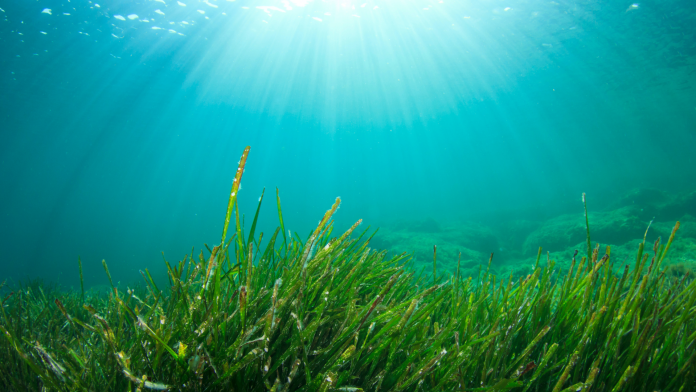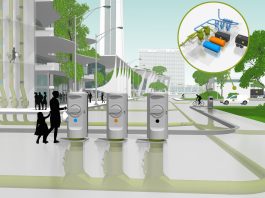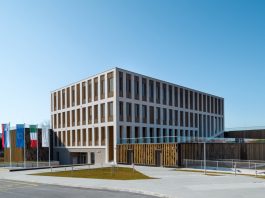FutureMARES brings together over 250 scientists from 32 partner institutions working across European and South American seas to provide innovative, science-based advice on how to rebuild marine biodiversity for climate change adaptation and mitigation.
The EU-funded FutureMARES project brings together more than 250 scientists from 32 partner institutions working across European and Central/Latin American seas to provide innovative, science-based advice on actions to rebuild marine biodiversity for climate change (CC) adaptation and mitigation. The project’s work focuses on two nature-based solutions (habitat restoration (NBS1), marine species and habitat conservation/protection (NBS2)) and nature-inclusive (sustainable) Harvesting (NIH) (Fig. 1).
FutureMARES has been designed to:
1. Advance knowledge of marine species and communities in terms of their functions, roles, and services as impacted by CC;
2. Deliver projections of the physical and biogeochemical effects of CC and identify climate hotspots and refugia;
3. Perform field and mesocosm experiments to answer key questions on the sensitivity and adaptive capacity of species and habitats to CC;
4. Provide projections of the effects of CC on the distribution and productivity of habitat-forming and/or commercially or culturally valuable species and consequences for marine biodiversity;
5. Conduct novel, social-ecological climate risk assessments that gauge the effectiveness of NBS and NIH to reduce the severity of CC impacts on ecosystem services and dependent human communities;
6. Perform economic analyses of scenarios of the implementation of habitat restoration, conservation strategies, and sustainable harvesting in terms of their costs and benefits at real-world demonstration sites; and
7. Co-develop its research with decision- and policymakers and managers to deliver science-based advice for CC adaptation and mitigation.
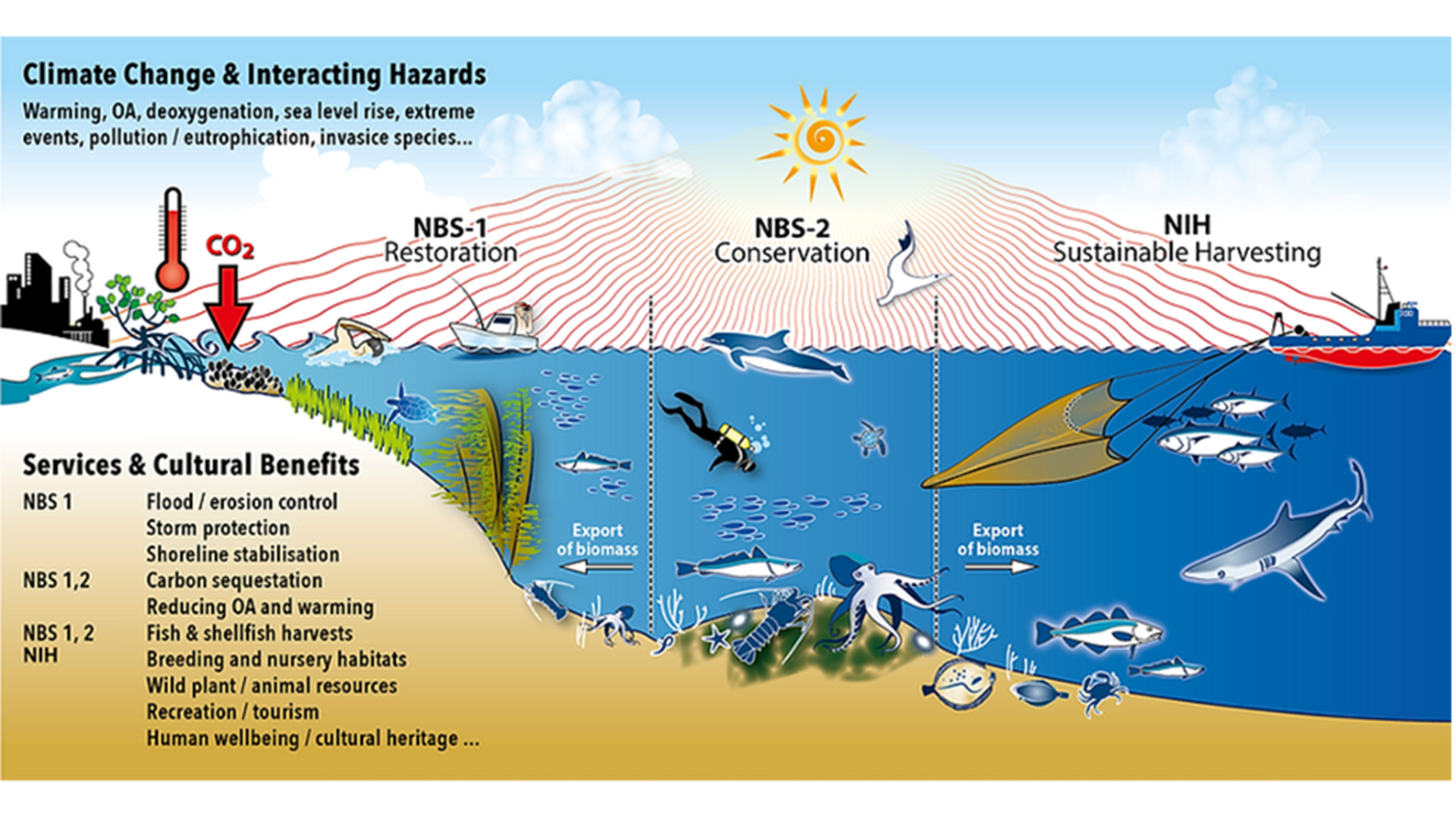
Active habitat restoration
Restoration of habitat-forming species such as seagrasses, salt marshes, kelp forests, coral reefs and shellfish reefs can buffer species from the negative effects of CC. These habitats support high marine biodiversity, provide natural refuges and feeding grounds for commercially important fish, improve seawater quality, reduce coastal erosion, and flood risk, function as carbon sinks (regulating climate), and sustain tourism and cultural activities.
For more than a century, huge losses in the spatial extent of marine habitats have occurred due to the impact of multiple pressures, including eutrophication, pollution, overfishing, trawling of the seafloor, coastal construction, deforestation, and CC (Duarte et al. 2020). Restoring these marine habitats and their ecosystem services requires actions that remove the pressures that have caused these losses. Once pressures are reduced (e.g. via conservation measures), the habitat may gradually recover depending on the species and local setting. In many instances, active restoration, such as planting seagrass, reducing grazing pressure on kelp forests by urchins, or introducing new sporelings may be required (Eger et al. 2022). Active restoration is often resource-demanding and occurs at smaller spatial scales relative to historical losses, underscoring that managers should prioritise avoiding losses in the first place.
Based on monitoring changes in marine habitats, substantial recovery of marine life could be achieved by 2050 if major pressures are mitigated (Duarte et al. 2020). The EU Nature Restoration Law that is currently being negotiated as a key element of the EU’s Biodiversity Strategy requires that measures be taken to restore at least 20% of the EU’s land and sea areas by 2030, and ultimately all ecosystems in need of restoration by 2050. It supplements legislation, regulations, and agreements in place under the Kunming Montreal Global Biodiversity Framework, the Water Framework Directive, the Marine Strategy Framework Directive, the Habitats Directive, and others. The science delivered by FutureMARES will underpin restoration plans at national and EU levels to meet restoration targets and associated ecosystem and societal benefits.
FutureMARES explores active restoration at seven demonstration sites, so-called ‘storylines,’ distributed across European, Central, and South American seas and habitats. These storylines focus on six habitat-forming species: shallow-water seagrass meadows, kelp forests, coastal saltmarshes, coral-forming animals, and beds of oysters and mussels. FutureMARES supports the evaluation of restoration potential and the setting of restoration targets by exploring the reference situation, identifying current habitat extent, and the status of pressures causing the losses (e.g. Krause-Jensen et al. 2021). Prediction of future climate-change hotspots and refugia further supports this endeavour. Major efforts are also directed at prioritising key areas and strategies for active restoration by, for example, testing restoration methods and further developing climate-ready strategies. Climate readiness involves maximising the robustness of habitats to withstand CC and the potential of habitats to contribute to CC mitigation (by trapping and burying carbon) and CC adaptation (e.g. via increased coastal protection). FutureMARES also highlights the importance of monitoring activities to track the effectiveness of active restoration and co-develop these and other management strategies with stakeholders.
Marine biodiversity and conservation strategies
Conservation strategies consider the range of impacts of CC and other hazards on habitat suitability for marine plants and animals. Strategies explored include climate-ready networks of marine protected areas (MPAs) that preserve food webs and sustain population connectivity and conservation of highly migratory species.
The establishment of MPAs is a widespread conservation tool intended to protect all components of biodiversity and promote healthy ecosystems that increase societal benefits in the form of ecosystem services. The importance of designing effective networks of MPAs to combat the combined biodiversity and climate crises is clear (Hoegh-Guldberg et al. 2023). Recent international (UN CBD Kunming-Montreal global biodiversity framework, Post SAPBIO 2020 Barcelona Convention) and European (EU Biodiversity Strategy) agreements include the establishment of MPAs to protect 30% of all ocean areas by 2030 with the strict protection of 10% of European waters.
Establishing MPAs, especially ‘fully protected’ MPAs where the impacts of all human activities are absent, can address both CC mitigation and adaptation (Roberts et al. 2017). MPAs promote mitigation by protecting habitats such as kelp forests, coral-forming species and seagrass meadows that play key roles in preserving and enhancing carbon storage in shallow waters. This is a form of passive restoration. MPAs also help ensure the functioning of food webs that drive the storage and transport of carbon from shallow to deep environments. MPAs can promote adaptation by enhancing ecological resilience through the reduction and/or complete removal of local stressors and by improving the overall conservation status of populations, species, and habitats (Roberts et al. 2017). Moreover, MPAs can be focal points of stakeholder engagement, facilitating the development of joint climate adaptation measures. MPAs, particularly in the Mediterranean region, have played a major role in facilitating ocean literacy by informing the public on CC issues, including the critical importance of reducing greenhouse gas emissions.
At the present time, the proportion of MPAs with strict protection is extremely small; in the Mediterranean Sea, only 0.1% of all MPAs have strict protection (Claudet et al. 2020). Therefore, the contribution of MPAs to CC adaptation and mitigation is not being realised. A great proportion of MPAs can be aptly termed ‘paper parks’ since many of these areas lack management plans to safeguard marine biodiversity, and even fewer MPAs include CC adaptation plans (Rilov et al. 2019, Garrabou et al. 2019, Claudet et al. 2020). Climate change threatens the effectiveness of MPAs due to the impacts of severe marine heatwaves or long-term increases in average temperatures (Montero-Serra et al. 2019). The advancement of tools by FutureMARES will help decision-makers not only design climate-ready networks of MPAs but also help prioritise MPAs to be fully protected. FutureMARES includes nine storylines that examine MPAs or MPA networks across European seas and in Chile.
Nature-inclusive harvesting
Harvesting seafood from fisheries and aquaculture must be flexible, adaptive, equitable, and managed on a whole-ecosystem basis. Ongoing impacts of CC require approaches that can adapt to shifts in the productivity, distribution, and interactions of species. Sustainable seafood production will also rely on increases in the cultivation and harvesting of plants and animals near the base of food webs.
Marine fisheries are managed for sustainability under the Common Fisheries Policy (CFP), but a relatively narrow definition of sustainability is applied. Currently, the focus is to maintain the reproductive capacity (spawning stock biomass) of individual fish stocks to help ensure the maximum sustainable yield (catch) in the long term while minimising unwanted catching of fish and protecting endangered and threatened Species (PETS). With the introduction of the Marine Strategy Framework Directive (MSFD), there has been renewed monitoring, assessment and management of by-catch risk, the age and size structures of stocks (e.g. Griffiths et al. 2023), the functioning of food webs and biodiversity to meet Good Environmental Status, GES (OSPAR 2023, HELCOM 2023). Given that GES has not yet been reached throughout any European sea and that pressures continue to increase (e.g. new construction of offshore windfarms), a reduction in cumulative pressures is required to maintain ecosystem functioning and restore biodiversity.
To maintain food provisioning from the sea, more holistic and sustainable harvesting practices are needed. Wild-capture fisheries of greatest concern are those that use gears that directly damage seabed habitats and their benthic communities, such as beam trawls for flatfish or dredges for scallops (OSPAR 2023). Furthermore, catches in some bottom (demersal) fisheries are often ‘mixed’, making it challenging to avoid unwanted catches of sensitive species. In addition, in some areas, the suitable habitat of demersal fishes is shrinking due to climate warming (Peck & Pinnegar, 2018). In contrast, pelagic fisheries are often considered more desirable since they avoid damage to seabed habitats, and the target species, such as herring and mackerel, are highly productive and can often be caught exclusively from other species. Some pelagic fisheries, however, target species near the base of food webs, such as sandeel that are important diet items for many predators, including marine mammals (e.g. harbour porpoise and grey seals), seabirds and other fishes (Peck et al. 2014). Thus, small-scale and artisanal fisheries that support local communities may be preferable to intensive industrial pelagic or demersal trawling.
Aquaculture is an important part of the solution to sustainable food provisioning, particularly when farms can be co-located with other offshore infrastructures such as wind farms. However, despite great increases in aquaculture over the last decades and ambitious plans for upscaling, the growth rate of aquaculture in Europe is much slower than in other parts of the world. This suggests that wild-capture harvests will remain important to food provision (Sumaila et al. 2022). For finfish species such as salmon, important issues include the generation of sustainable feeds, controls over antibiotic usage, and risks from CC such as increased frequency of disease and pathogen outbreaks (Murray et al. 2022). Culturing species at or near the base of marine food webs such as seaweeds (kelp) and shellfish (mussels, oysters) has been recommended to be the most ecologically sustainable way of providing food from the sea.
FutureMARES is advancing tools to make projections of the locations that can support the largest increases in the aquaculture of species near the base of the food web, such as shellfish. Several SLs also test scenarios of synergies or potential conflicts among habitat restoration, marine conservation and NIH to provide managers with more holistic, ecosystem-based advice for sustainable seafood in a future climate. Combined (e.g. active habitat restoration is best performed within MPAs), these interventions will help safeguard future biodiversity and ecosystem functions, maximise natural capital, and continue delivering services from marine ecosystems for future generations.
Climate change mitigation
The results of FutureMARES will strongly contribute to upcoming national-, EU- and global-level reports, policies and interventions related to Biodiversity and Climate Change. At the global scale, restoration (NBS1) and conservation (NBS2) of marine ecosystems can deliver substantial benefits, such as removing 0.285 Gt CO2 yr-1 by 2050, which is 0.7% of the estimated emission gap to meet the Paris agreement by 2050 (Hoegh-Guldberg et al. 2023). The first results of FutureMARES highlight the projected benefits of adopting actions that limit global emissions of greenhouse gasses in reducing ocean warming (Fig. 2). This work is based on the projections from a large group (ensemble) of global climate models participating in the World Climate Research Programme, Coupled Model Intercomparison Project (CMIP6). These ensemble projects were ‘downscaled’ in FutureMARES to provide the higher resolution needed to run biological models identifying locations well suited for climate-ready habitat restoration, networks of MPAs and productive aquaculture and capture fisheries.
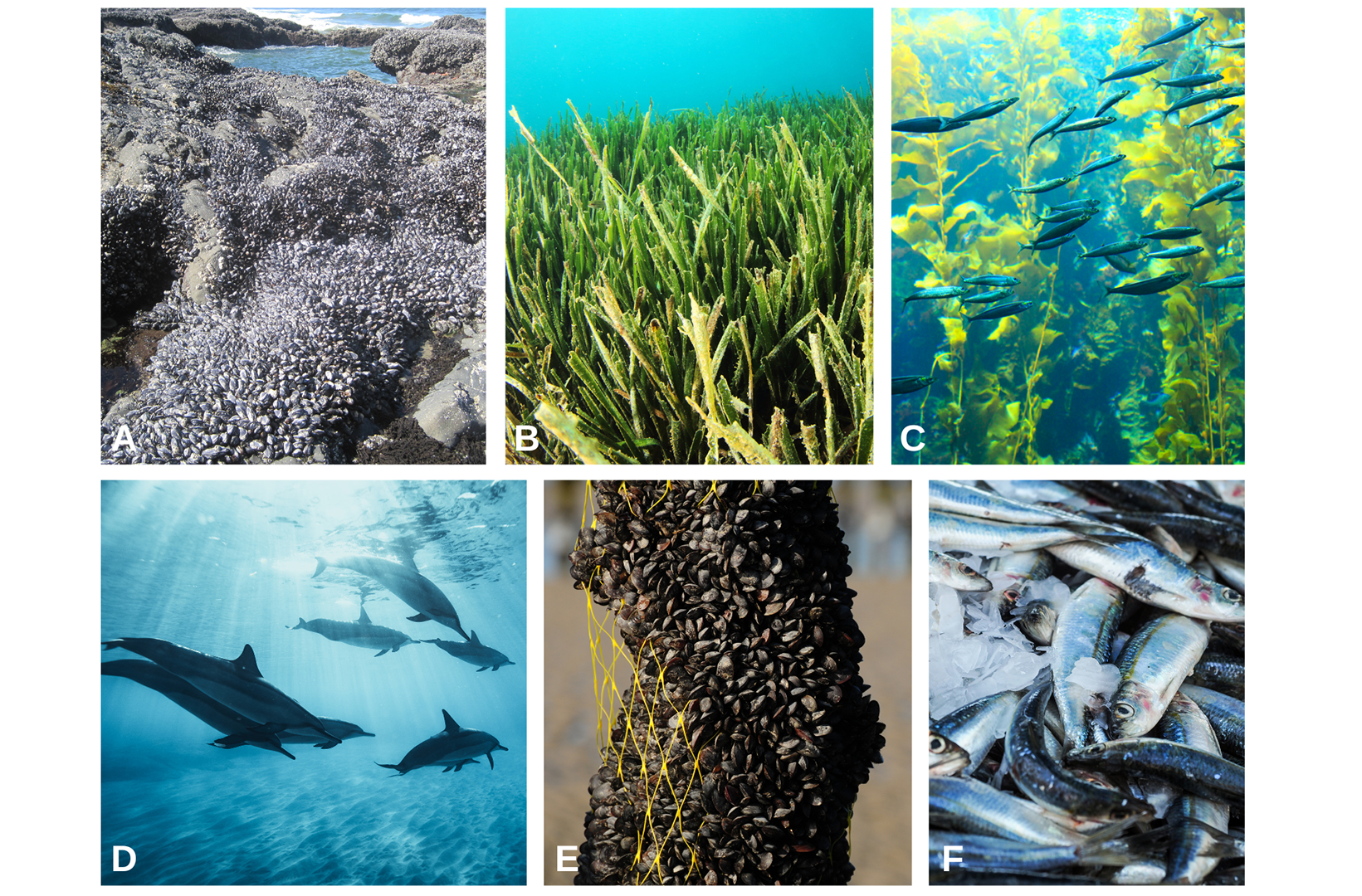
Engagement with key stakeholders and policymakers
Human activities and decision processes critically influence how we protect and restore our marine environments and harvest food from the sea. Hands-on implementation of solutions requires understanding local contexts and the buy-in (social acceptance) from actors, turning policies into actionable solutions (EC 2013). Exchange with stakeholders, therefore, is a cornerstone of the project. Key actor groups for the co-creation of project results are local and regional governments, environmental management bodies at various scales (from local to national), NGOs, international initiatives on marine biodiversity (e.g. HELCOM, OSPAR) as well as marine users such as fishers, aquaculture farmers and the tourism sector. The project has a multi-layered engagement structure using different techniques (in-person workshops, questionnaires, one-on-one meetings) that help to enhance exchange with regional and local stakeholders, policymakers, and relevant international initiatives (see Fig. 3). The project uses three engagement phases with different strategic goals. The project also included a ‘call for knowledge’ allowing policymakers or other interested stakeholders to ask FutureMARES to address specific topics not covered in the original work plan. We recommend that future EU programs include this mechanism, particularly projects in fast-changing policy fields such as those providing actionable solutions to the biodiversity and climate change crises.
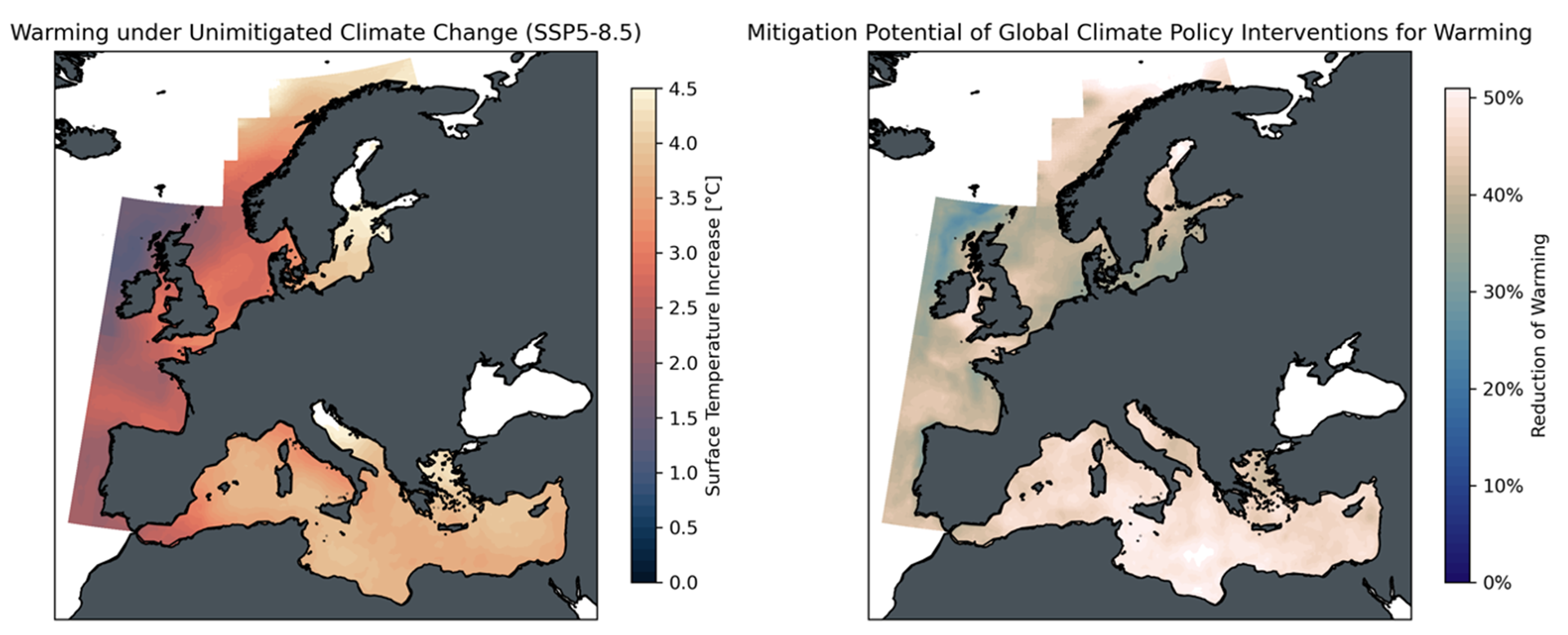
Envisioned products of FutureMARES
FutureMARES will create new knowledge and tools for the scientific community, policymakers and decision-makers, and managers of marine habitats. Key products co-developed with stakeholders will include:
- Maps of climate hotspots and refugia and future habitat suitability for restoration targets
(seagrasses, kelp, shellfish, reef-building animals), MPAs and their networks, and aquaculture or fisheries targets based on different IPCC scenarios with projections produced for different time horizons (e.g. 2030, 2050 and 2100); - A general methodology for conducting climate risk assessments on key ecological components, ecosystem services, and human communities with examples from FutureMARES regional storylines, including an online tool with a user guide;
- New frameworks for ecosystem indicators that are relevant for evaluating the success of nature-based solutions and nature-inclusive harvesting, including both economic and social indicators; and
- Reference documents outlining the findings on the science-based implementation of nature-based solutions and/or sustainable harvesting in specific regions such as the Mediterranean Sea, Bay of Biscay, North Sea, north-east Atlantic and Baltic Sea.
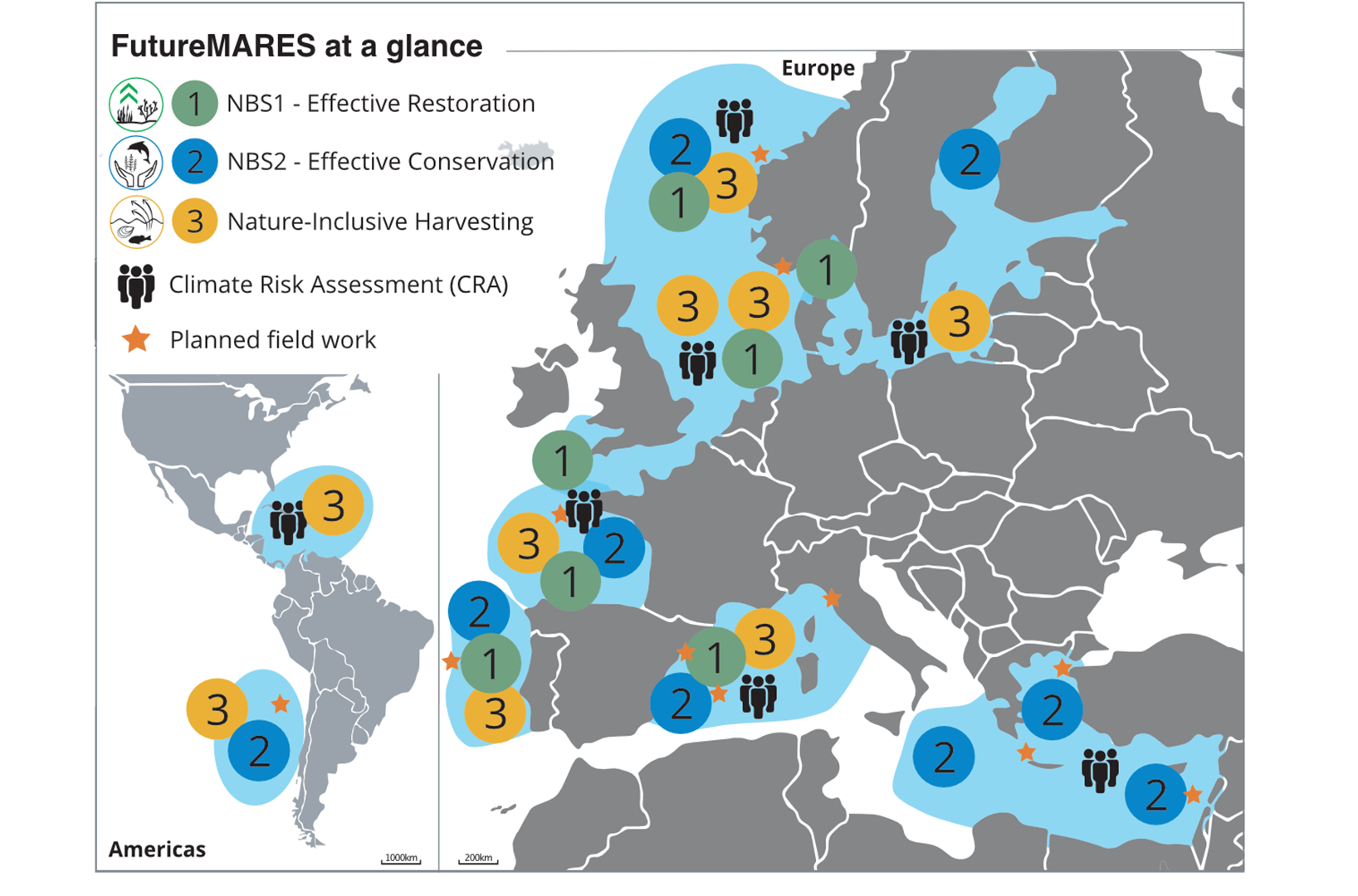
Authors:
Myron A Peck
Royal Netherlands Institute for Sea Research (NIOZ), Den Burg (Texel), the Netherlands
Momme Butenschon
Euro-Mediterranean Center on Climate Change (CMCC), Lecce, Italy
Joaquim Garrabou
Spanish National Research Council (CSIC), Madrid, Spain
Christopher P Lynam
Centre for Environment, Fisheries, and Aquaculture Science (CEFAS), Lowestoft, UK
Dorte Krause-Jensen
University of Aarhus, Aarhus, Denmark
Vera Kopsel
University of Hamburg, Hamburg, Germany
References
- Duarte, C M, Agusti, S, Barbier, E, Britten, G L, Castilla, J C, Gattuso, J P, Fulweiler, R W, Hughes, T P, Knowlton, N, Lovelock, C E, and Lotze, H K, (2020) Rebuilding marine life, Nature, 580(7801), pp.39-51
- Eger, A M, Marzinelli, E M, Christie, H, Fagerli, C W, Fujita, D, Gonzalez, A P, … and Vergés, A, (2022) Global kelp forest restoration: past lessons, present status, and future directions, Biological Reviews, 97(4), 1449-1475
- European Commission (2013) Responsible research and innovation (RRI), science and technology – Report, Publications Office
- HELCOM (2023) State of the Baltic Sea – Third HELCOM holistic assessment 2016–2021 (published on 31 October 2023) Hoegh-Guldberg, O, Northrop, E et al. (2023) The ocean as a solution
to climate change: Updated opportunities for action. Special Report. Washington, DC: World Resources Institute - Krause‐Jensen, D, Duarte, C M, Sand‐Jensen, K and Carstensen, J (2021) Century‐long records reveal shifting challenges to seagrass recovery, Global Change Biology, 27(3), 563-575
- Montero-Serra, I, Garrabou, J, Doak, D F, Ledoux, J-B, Linares, C, (2018) Marine protected areas enhance structural complexity but do not buffer the consequences of ocean warming for an overexploited precious coral, Journal of Applied Ecology, 56, 1063-1074
- Murray, A, Falconer, L, Clarke, D, and A Kennerley, (2022) Climate change impacts on marine aquaculture relevant to the UK and Ireland, MCCIP Science Review, 18pp. doi: 10.14465/2022.reu01.aqu
- Pastor, A, Ospina-Alvarez, A, Larsen, J, Hansen, F T, Krause-Jensen, D and Maar, M (2022). A network analysis of connected biophysical pathways to advice eelgrass (Zostera marina) restoration, Marine Environmental Research, 179, 105690.
- Peck, M A, Neuenfeldt, S, Essington, T E, Trenkel, V M, Takasuka, A, Gislason, H, Dickey-Collas, M, Andersen, K H, Ravn-Jonsen, L, Vestergaard, N, Kvamsdal, S, Gårdmark, A, Link, J, and Rice, J C,
(2014) Forage fish interactions: A symposium on creating the tools for ecosystem-based management of marine resources, CES Journal of Marine Science 71:1-4 - Peck, M A, Pinnegar, J K (2018) The Chapter 5: Climate Change Impacts and Vulnerabilities: The North Atlantic & Atlantic Arctic, Pages 87–111, In Barange M, Bahri T, Beveridge M, Cochrane K, Funge-Smith S, Poulain F (Eds.) 2018. Impacts of Climate Change on Fisheries and Aquaculture:
Synthesis of Current Knowledge, Adaptation and Mitigation Options, FAO Fisheries Technical Paper 627 - OSPAR (2023) Quality Status Report 2023. OSPAR Commission, London
- Rilov, G, Mazaris, A D, Stelzenmüller, V, Helmuth, B, Wahl, M, Guy-Haim, T, Mieszkowska, N, Ledoux, J-B and Katsanevakis, S (2019) Adaptive marine conservation planning in the face of climate change: What can we learn from physiological, ecological and genetic studies? Global Ecology and Conservation 17: e00566
- Roberts, C M, O’Leary, B C, McCauley, D J et al. (2017) Marine reserves can mitigate and promote adaptation to climate change. Proceedings of the National Academy of Sciences 114: 6167-6175
- Sumaila, U R, Pierruci, A, Oyinlola, M A, Cannas, R, Froese, R, Glaser, S, Jacquet, J, Kaiser, B A, Issifu, I, Micheli, F, Naylor, R and Pauly, D, (2022) Aquaculture over-optimism? Front. Mar. Sci. 9:984354. doi: 10.3389/fmars.2022.984354
Please note, this article will also appear in the sixteenth edition of our quarterly publication.

